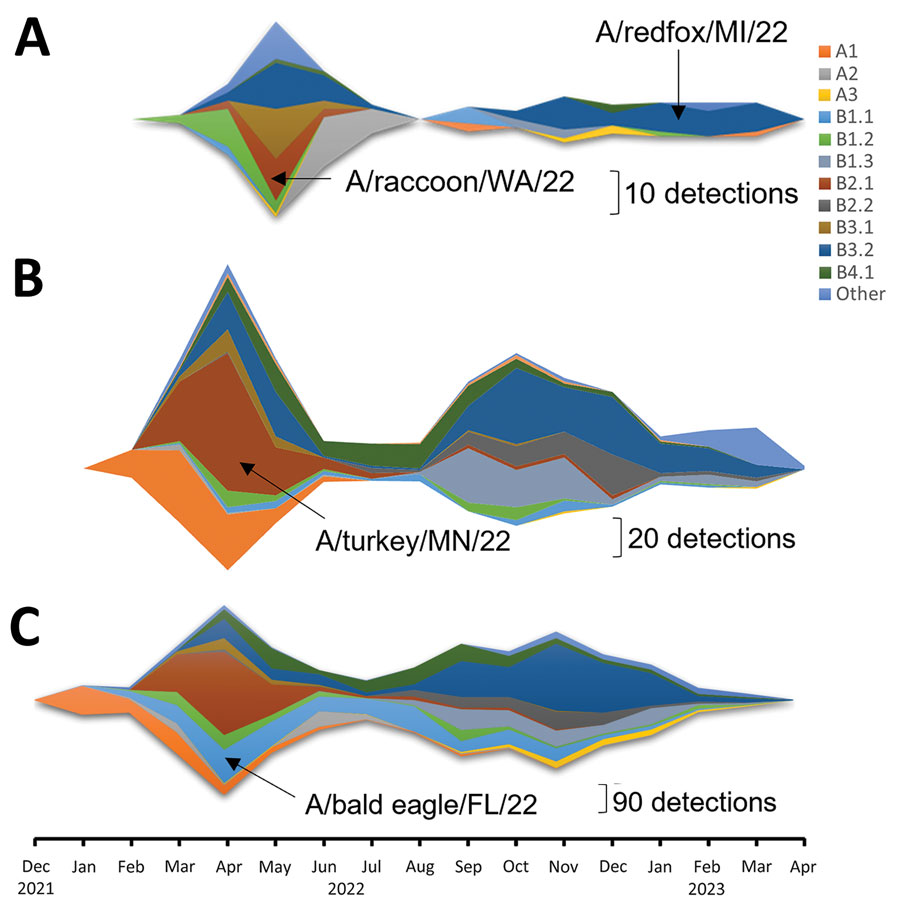Volume 30, Number 4—April 2024
Research
Divergent Pathogenesis and Transmission of Highly Pathogenic Avian Influenza A(H5N1) in Swine
Figure 1

Figure 1. Detection of Eurasian lineage goose/Guangdong H5 clade 2.3.4.4b virus and identification of virus isolates used in study of divergent pathogenesis and transmission of highly pathogenic avian influenza A(H5N1) in swine, by genotype. A) Wild mammal; B) poultry; C) wild birds.
Page created: March 07, 2024
Page updated: March 20, 2024
Page reviewed: March 20, 2024
The conclusions, findings, and opinions expressed by authors contributing to this journal do not necessarily reflect the official position of the U.S. Department of Health and Human Services, the Public Health Service, the Centers for Disease Control and Prevention, or the authors' affiliated institutions. Use of trade names is for identification only and does not imply endorsement by any of the groups named above.